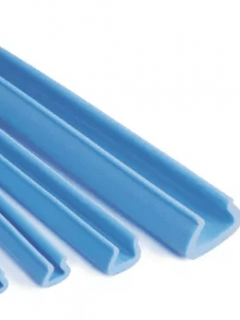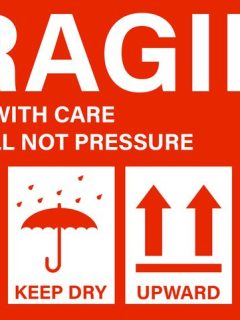Hundreds of online shops are created every month. Standing out from so much competition is therefore no easy task. Companies go to great lengths to meet customer expectations. Every little detail counts, from efficient communication across all online and offline channels to well-chosen packaging. One way to add variety is through personalisation. Is it worth investing in it?
The importance of packaging personalisation
There is no doubt that the appearance of a product has a huge impact on purchasing decisions, and the packaging and label are the first elements we pay attention to. Often, we reach for a product simply because its graphic design appeals to us. Attractive, surprising and distinctive packaging therefore has great potential to increase sales.
However, in the age of advertising and printing technology, manufacturers need to reach for even more sophisticated solutions in order to stand out from the competition. In this context, the personalisation of packaging and labels becomes a key tool, allowing customers to feel that the product is made just for them.
Read also: Principles of personalisation in e-commerce.
Which packaging to choose for personalisation?
There are many types of packaging available to e-commerce shops and the logistics companies that work with them. These differ primarily in terms of the materials used. Which are the most popular?
- Cardboard packaging – is the most popular and economical choice among personalised packaging. They are characterised by their light weight, ease of transport and storage. Their flexibility allows them to fit a variety of product shapes and sizes, making them an attractive solution for many businesses. They can be personalised with a label label or a sticker with your company logo.
- Plastic packaging – although more expensive than cardboard packaging, plastic packaging is more durable and airtight. For this reason, they are a good choice for storing products that require airtightness. However, they do have a negative impact on the environment, making this choice an informed decision. They can be personalised by, for example, choosing specific colours that correspond to the company’s corporate identity.
- Paper packaging – an environmentally friendly choice, available in various shapes and sizes. They are cheaper to produce than plastic packaging and are ideal for lower value products. They are great for personalisation, as you can easily put any imprint on them.
In the context of packaging suitable for personalisation, it is also worth mentioning self-printed ribbons. Their use allows the creation of a unique design, which contributes to personalising and making products more attractive. In addition, printed tapes can act as a marketing element, helping to differentiate the brand in the market and attracting customer attention.
Advantages and disadvantages of personalised packaging
Does it make sense to invest in personalised packaging? It’s worth taking a closer look at the advantages. What are some of them?
- Stand out in the market – in a crowd of similar products, personalised packaging allows a company to stand out and draw the attention of potential customers. The unique design and personalised elements catch the eye and make the product easier to remember. Read more about this topic in our post: Personalised packaging: how to stand out in the market.
- Building brand image – personalised packaging can carry a brand, helping to build brand image and recognition. Consistent use of brand identity on packaging builds customer trust and loyalty.
- Better customer communication – with personalisation, a company can better communicate with customers by including personalised messages, promotional offers or dedicated discounts on packaging. This, in turn, can increase customer engagement and drive repeat purchases. In addition, events such as Christmas or Mother’s Day provide the perfect opportunity to include relevant lettering or graphics on packaging, increasing the appeal of the product as a finished, personalised gift.
- Increasing the perceptual value of the product – aesthetically pleasing and carefully designed personalised packaging can increase the perceptual value of the product itself. Customers very often perceive such products as more exclusive and valuable, which can influence their willingness to pay a higher price.
Do personalised packaging have any disadvantages? There can be a high cost involved in designing such packaging. There is also a risk that they will become outdated over time, if only as a result of rebranding. However, it is worth noting that the cost of personalised packaging varies significantly depending on the manufacturer and the type of packaging.
Is it worth investing in personalised packaging?
The growing popularity of personalised packaging is due to the benefits it brings to manufacturers. These include increased product aesthetics, better communication with the customer and the opportunity to stand out. The success of companies that have adopted this strategy attests to its effectiveness, encouraging more entrepreneurs to use this tool to reach their customers.














